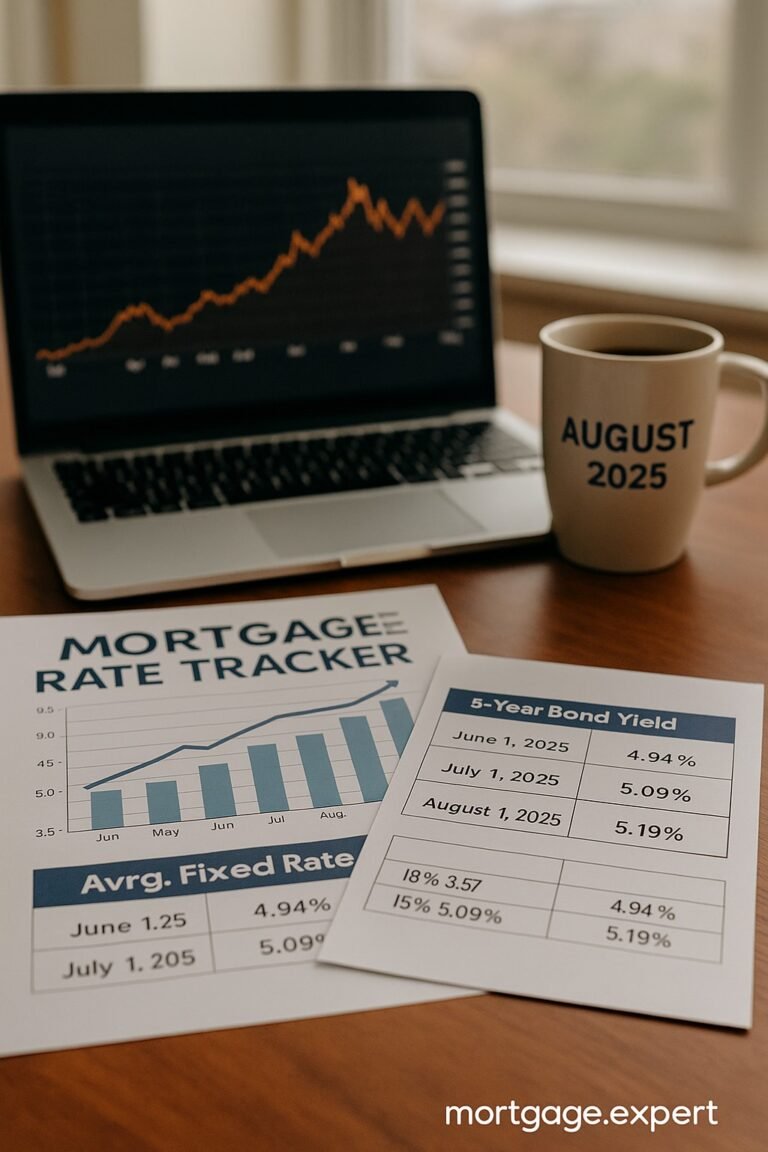
Porting Your Mortgage in Canada (2025): A Complete Guide to Transferring Without Penalties
Let’s say you locked into a great mortgage rate two years ago. But now, your family is growing, and it’s time to move to a bigger place. You’re halfway through your term, and your current rate is lower than what the banks are offering today.
If you break your mortgage, you’ll be hit with a prepayment penalty — and it could be tens of thousands.
But there’s another option: porting your mortgage.
In this 2025 guide, we’ll break down how mortgage porting works in Canada, whether it’s worth it, and how to avoid expensive mistakes during your move.
What Does ‘Porting a Mortgage’ Mean?
Porting a mortgage means taking your existing mortgage — with its current rate, term, and lender — and transferring it to a new property.
You’re essentially telling your lender: ‘Hey, I’m moving houses, but I want to keep this same mortgage.’
This way, you don’t need to break your mortgage or pay penalties. The terms stay intact — just applied to a different home.
🔁 Porting Your Mortgage: House A → House B
When you sell your home and buy a new one, you may be able to bring your existing mortgage — same rate, same terms — to the new property without penalties.
🏠 House A – Your Current Home
You’re halfway through a 5-year fixed mortgage with Lender XYZ at 4.89%.
📄 Mortgage Porting Process
You sell House A and buy House B. Your lender agrees to port your mortgage to the new home.
No prepayment penalty applies if the conditions and timelines are met.
🏡 House B – Your New Home
Your original mortgage rate, term, and lender continue — no penalty, no rate change, just a new property address.
Why Do People Choose to Port a Mortgage?
There are two big reasons: to save money and keep stability.
If you’re in the middle of a 5-year fixed mortgage with a great rate (say, 2.49%), today’s rates (maybe 5.25%) will feel painful. Porting helps you hold onto that sweet deal.
It also avoids prepayment penalties, which can run into ₹1 lakh+ depending on how early you are in the term and how big the mortgage is.
How Porting a Mortgage Actually Works in 2025
In most cases, your lender will allow porting if:
– You’re staying with the same lender
– You’re buying a new primary residence
– The new mortgage amount is equal or higher
You typically have **90 days** to port. That means you must close the sale of your old home and the purchase of your new one within that window.
📆 Mortgage Porting Timeline – 90 Days to Complete Both Deals
To port your mortgage penalty-free, your current home’s sale and new home’s purchase must close within a 90-day window. Here’s how it works:
🏠 Day 0: Sale of House A Closes
Your existing mortgage is closed out and marked for portability.
🛒 Day 1–89: Buy New Home
Work with your broker to apply the same mortgage terms to House B.
🏡 Day ≤ 90: House B Closes
Your original mortgage is ported successfully. 🎉 No penalty charged.
Real-Life Example: Kavita and Raj Avoid Penalties by Porting
Kavita and Raj bought their condo in 2021 with a 5-year fixed mortgage at 1.99%. In 2025, they’re expecting a baby and want a bigger home. But today’s rates are over 5%, and breaking the mortgage would cost them ₹1.25 lakh in penalties.
Instead, they port their mortgage when moving to their new townhouse. They avoid the penalty, keep their low rate, and only need to blend in a top-up amount (we’ll cover that next).
What is a Blended Mortgage Rate?
If your new home costs more and you need a larger mortgage, your lender won’t give you the old rate on the top-up. Instead, they offer a **blended rate** — a mix of your old rate and current market rates.
Think of it as averaging your current deal with today’s rates.
📊 Blended Mortgage Rate Example: Porting + Topping Up
Here’s how your mortgage rate is blended when you port your existing loan at 2.49% and borrow extra funds at 5.25% through your lender.
| Component | Amount | Interest Rate | Weighted Impact |
|---|---|---|---|
| 🔁 Existing Mortgage (Ported) | $300,000 | 2.49% | 2.49 × (300K ÷ 500K) = 1.494% |
| ➕ New Top-Up Amount | $200,000 | 5.25% | 5.25 × (200K ÷ 500K) = 2.10% |
| 📌 Final Blended Rate | $500,000 (Total) | — | ✅ ~3.79% |
Can You Port a Variable-Rate Mortgage?
Some lenders don’t allow porting for variable-rate mortgages. Others do, but often require you to switch to a fixed-rate mortgage during the port.
So if you’re planning a move and have a variable-rate mortgage, call your lender or broker first. You’ll want clarity before making any decisions.
What Happens if You Move to a Cheaper Home?
If your new home needs a smaller mortgage, you may still be allowed to port — but only the portion that applies.
Let’s say you had a $500,000 mortgage and your new home only needs $400,000. Your lender may let you port $400,000, but the rest might trigger a partial prepayment penalty.
Also, downsizing often means stricter approval requirements — your lender wants to make sure the numbers still work.
What If Your New Home is More Expensive?
This is the most common case. If your new home costs more and you need a larger mortgage, the lender will ‘blend and extend’ — keeping your existing mortgage intact and adding a new top-up portion.
That new portion will likely have a higher interest rate, but the blend keeps things affordable overall.
Porting Timeline: Coordinating the Sale and Purchase
Timing is everything. Most lenders give you 90 to 120 days to complete your port.
That means you have to sell your current home and take possession of your new one within that period. If there’s a gap, you may need **bridge financing** — a short-term loan to cover the interim period.
📊 Blended Mortgage Rate Example: Porting + Topping Up
Here’s how your mortgage rate is blended when you port your existing loan at 2.49% and borrow extra funds at 5.25% through your lender.
| Component | Amount | Interest Rate | Weighted Impact |
|---|---|---|---|
| 🔁 Existing Mortgage (Ported) | $300,000 | 2.49% | 2.49 × (300K ÷ 500K) = 1.494% |
| ➕ New Top-Up Amount | $200,000 | 5.25% | 5.25 × (200K ÷ 500K) = 2.10% |
| 📌 Final Blended Rate | $500,000 (Total) | — | ✅ ~3.79% |
When Porting Makes Sense — and When It Doesn’t
Porting your mortgage is a no-brainer if:
– You have a great existing rate
– You want to avoid prepayment penalties
– Your new home closes within your porting window
But porting might not work if:
– You’re switching to a different lender
– You have a variable-rate mortgage without porting rights
– Your new mortgage needs major changes
Always talk to your lender or broker before making any big moves.
Final Thoughts: Should You Port Your Mortgage?
If you’re moving in 2025 and already have a decent mortgage rate, porting can help you save thousands in penalties and lock in better-than-market pricing.
But like every mortgage decision, the details matter. Talk to your lender, understand the blend math, and make sure your closing dates align perfectly.
When done right, porting is one of the smartest financial moves a homeowner can make during a major life upgrade.
🔑 Master the Art of Porting Your Mortgage
Thinking about moving but don’t want to pay hefty penalties?
Discover how to port your mortgage and make the transfer seamless. We’ll guide you step by step. Learn How to Port Your Mortgage Without Fees
Stuck with a Mortgage Decision?
Don’t stress — our team is here to help. Reach out for free, no-obligation guidance.
Contact the Experts



